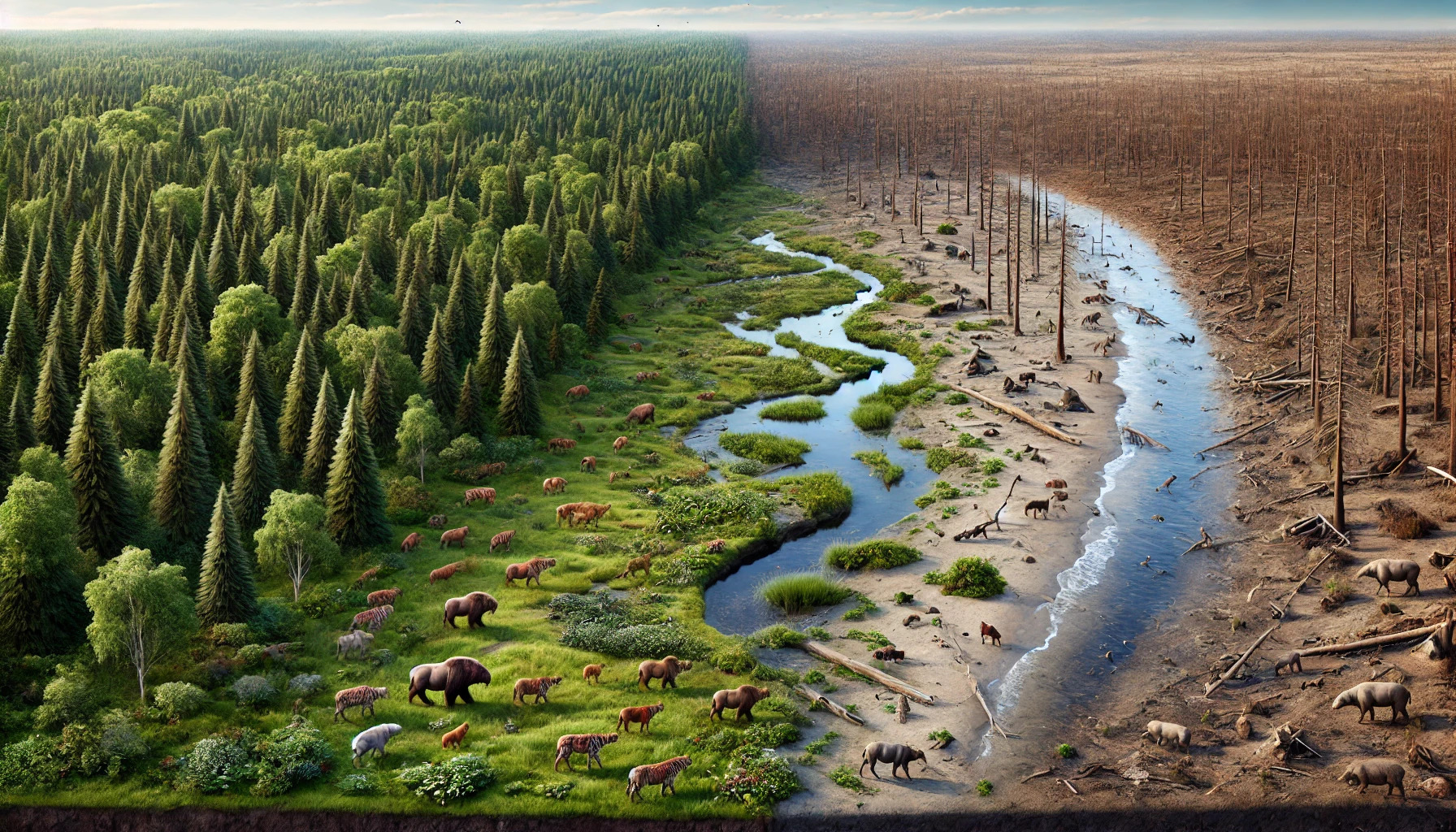The extinction of predators can have serious effects on ecosystems. When top predators disappear, it often leads to an increase in prey populations, which can create imbalances. This shift can disrupt various ecological processes, affecting plant life, water quality, and even the spread of diseases.
As these changes ripple through the environment, the entire food web becomes impacted. The removal of a single predator species may trigger unexpected consequences for both prey species and plant communities. For instance, without predators, herbivores may overgraze, leading to the loss of vegetation and habitat for other animals.
Understanding the role of predators is crucial for maintaining healthy ecosystems. Protecting these vital species not only helps sustain biodiversity but also ensures the stability of the environments they inhabit.
Predators’ Role in Ecosystems
Predators serve essential functions in ecosystems. They help to control species populations, influence biodiversity, and create important ecological balance. These roles are crucial for maintaining healthy environments.
Maintaining Species Populations
Predators play a key role in regulating the populations of prey species. By keeping prey numbers in check, they help prevent overgrazing and overpopulation. For example, when wolves hunt deer, they limit the deer population. This action allows vegetation to thrive, which benefits other species in the area.
Without predators, certain prey species can multiply rapidly, leading to significant declines in plant life and habitat quality. The balance between predators and prey is essential for ensuring that various species have the resources they need to survive.
Influencing Biodiversity
The presence of predators can significantly influence biodiversity. When predators are active in an ecosystem, they help maintain a variety of species by controlling dominant prey. For instance, lions keep herbivore populations like wildebeest under control.
This balance allows less dominant species to thrive, fostering a more diverse environment. Furthermore, high biodiversity can make ecosystems more resilient to changes, such as climate shifts or disease outbreaks. In contrast, removing predators can lead to a decline in biodiversity over time.
Trophic Cascade Effects
Trophic cascades occur when changes in the population of predators impact other levels of the food web. When top predators, like sharks or eagles, are removed, it often leads to an increase in smaller predators or herbivores.
These changes can result in overconsumption of plants, leading to habitat degradation. For example, in marine environments, the decline of sharks has led to an increase in smaller fish, which reduce kelp forests due to overgrazing. This phenomenon illustrates how interconnected all species are in an ecosystem. Keeping predators in place is crucial for maintaining this delicate balance.
Consequences of Predator Extinction
The extinction of predators can lead to significant changes in ecosystems. These changes can include an imbalance in species populations, growth of prey species, and alterations in vegetation and habitats.
Imbalanced Ecosystems
When a predator species disappears, the balance of the ecosystem becomes disturbed. Predators help control the populations of prey species. Without these predators, certain prey can multiply rapidly, leading to overcrowding and competition for resources.
This imbalance can cause other species to suffer. For example, if herbivores overgraze, they may deplete plant life. This, in turn, affects animals that rely on those plants for food and shelter.
Prey Population Explosion
The absence of predators often results in a dramatic increase in prey populations. Species such as rabbits or deer, for example, can reproduce unchecked. This surge leads to a phenomenon called a population explosion, which can strain available resources.
As food becomes scarce, competition between these animals intensifies. Weak individuals may struggle to survive, leading to a decline in their health and vitality. Moreover, this can push prey into human areas as they search for food, resulting in conflicts.
Vegetation and Habitat Changes
More prey animals continue to graze on vegetation without the checks and balances from predators. This excessive grazing can lead to significant harm to ecosystems. For instance, native plants can be wiped out, allowing invasive species to take over.
The shift in plant life changes habitats and reduces biodiversity. Many animals depend on healthy vegetation for food and shelter. When plants struggle to survive, the entire ecosystem faces the risk of collapse.
Case Studies of Predator Extinction Impacts
Predator extinction can dramatically alter ecosystems. The following case studies highlight significant examples where the loss of predators had profound consequences.
The Gray Wolf in Yellowstone National Park
The gray wolf, once nearly extinct in Yellowstone, plays a crucial role in maintaining the balance of the ecosystem. When wolves were removed in the 20th century, deer populations soared.
This overpopulation led to overgrazing, particularly of young willow and aspen trees. The decline of these plants affected species like beavers, who rely on them for food.
When wolves were reintroduced in 1995, the ecosystem began to recover. Vegetation grew back, supporting a more diverse range of wildlife and stabilizing the landscape.
The Tasmanian Devil and Invasive Species
The Tasmanian devil is known for its role in controlling feral populations, especially in Tasmania. However, the spread of a contagious cancer has significantly reduced their numbers since the late 1990s.
As the devil population declined, numbers of invasive species like rabbits and feral cats increased. These invasive animals compete with native species for resources, disrupting the ecosystem.
Efforts to protect the Tasmanian devil and manage invasive species are critical for maintaining balance. Understanding these effects helps highlight the importance of top predators in their habitats.

